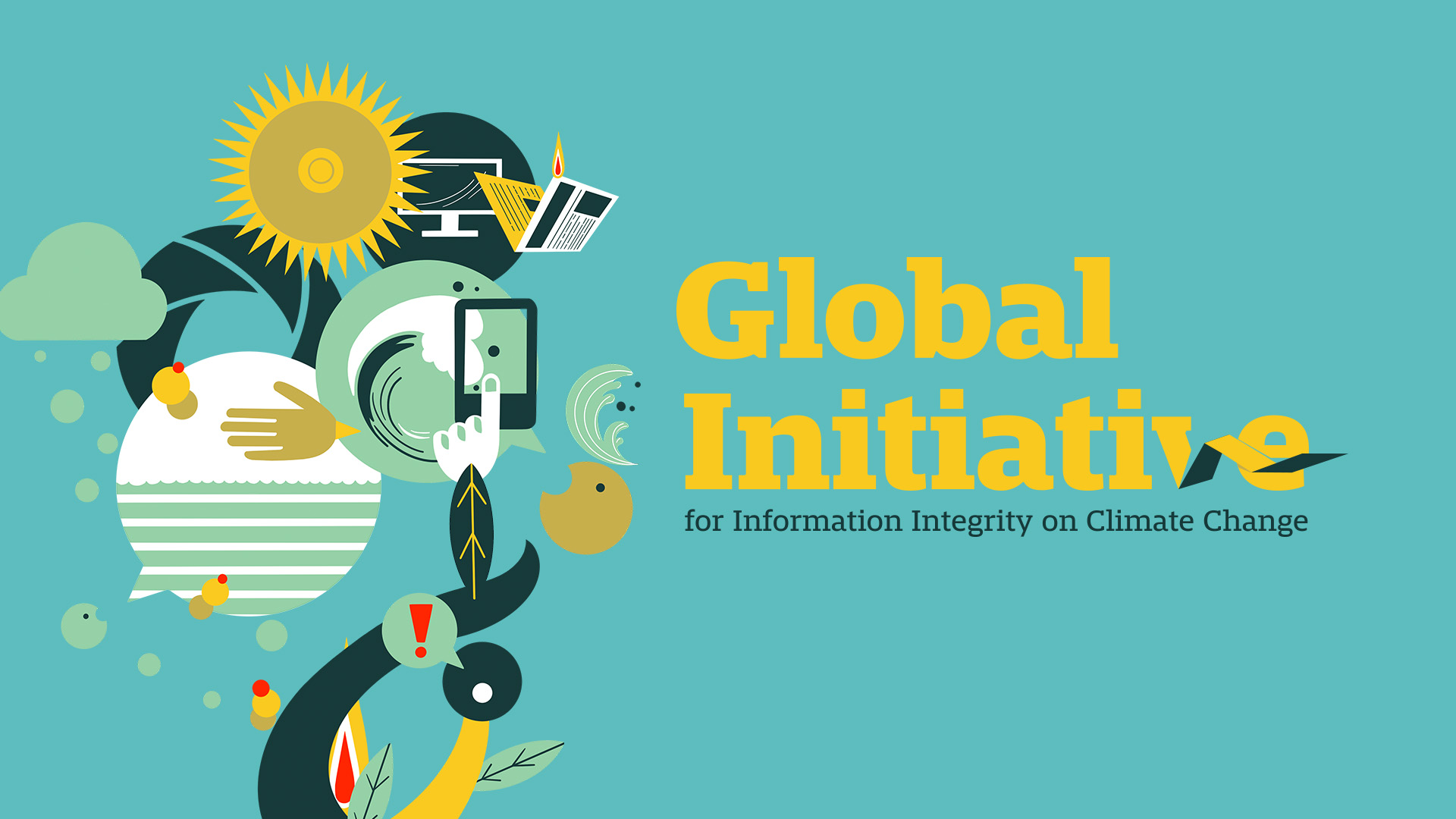Report: Climate change continues to drive warmer weather, extremes in Great Lakes region – wpr.org

Climate Change Impacts on the Great Lakes Region: An Analysis in the Context of Sustainable Development Goals (SDGs)
Introduction
An updated scientific assessment commissioned by the Environmental Law & Policy Center confirms that climate change is manifesting in the Great Lakes region through warmer temperatures, increased precipitation, significant lake level fluctuations, and adverse effects on local ecosystems. These findings have profound implications for the achievement of several United Nations Sustainable Development Goals (SDGs), particularly given that the Great Lakes serve as a critical drinking water source for 40 million people, a core concern of SDG 6 (Clean Water and Sanitation).
Key Climatic Shifts and Implications for SDG 13 (Climate Action)
Temperature and Precipitation Trends
The report documents a clear and accelerating trend of warming and increased precipitation, underscoring the urgent need for climate action as mandated by SDG 13. The data indicates a failure to curb greenhouse gas emissions, with projections showing more severe changes if fossil fuel use continues unabated.
- Average annual temperatures from 2017-2024 were 1.1 degrees Fahrenheit warmer than the preceding four decades.
- Since 1951, average air temperatures have risen by nearly 3 degrees Fahrenheit, and precipitation has increased by 15 percent.
- The frequency of extreme precipitation events (at least 2 inches of rain or snow) has increased by 6 percent.
- Projections for the end of the century suggest 30-60 more days with temperatures exceeding 90°F and a potential overall warming of up to 10°F under a high-emissions scenario.
Impacts on Water Resources and Ecosystems (SDG 6, SDG 11, & SDG 14)
Lake Temperatures and Levels
Warming is occurring in both surface and deep lake waters, leading to greater volatility in lake levels. This variability poses a direct threat to coastal infrastructure and communities, challenging the objectives of SDG 11 (Sustainable Cities and Communities).
- Summer water temperatures on Lake Superior increased by 4.8 degrees Fahrenheit between 1979 and 2023.
- Lakes Michigan, Huron, Erie, and Ontario experienced record-high average temperatures in the last year.
- Climate models project a significant increase in Great Lakes water levels by mid-century, with Lake Superior potentially rising by 7.5 inches and Lakes Michigan and Huron by 17 inches.
Water Quality and Industrial Demand
The combination of increased precipitation and warming temperatures exacerbates the formation of harmful algal blooms, directly compromising water quality and threatening progress on SDG 6. Furthermore, growing industrial water and energy demands present a challenge to sustainable resource management.
- Climate and land use changes are expected to negatively affect both water quality and quantity.
- The presence of 855 data centers in the region, which consume millions of gallons of water and significant energy for cooling, highlights a growing conflict between industrial development and the goals of SDG 6 and SDG 7 (Affordable and Clean Energy).
Life Below Water (SDG 14)
Changes in the aquatic environment are causing a decline in native fish populations, a critical issue for SDG 14 (Life Below Water), which aims to conserve and sustainably use marine and freshwater resources.
- Declining winter ice cover on the lakes is a primary factor in the population decline of lake whitefish, as ice serves to protect their eggs from currents and waves.
Terrestrial Ecosystems and Carbon Sequestration (SDG 15)
Forest Composition and Carbon Storage
Climate change is altering terrestrial ecosystems, with significant implications for biodiversity and carbon sequestration efforts central to SDG 15 (Life on Land). Recent findings suggest new opportunities for integrating timber production with climate mitigation.
- Tree species are expected to shift northward in response to warming temperatures.
- A study of over 9,000 trees in northern Wisconsin found that older trees exhibit increased growth rates, contrary to previous assumptions.
- This discovery is significant for SDG 15, as older trees are responsible for storing approximately 30 percent of carbon emitted into the atmosphere. The findings suggest that sustainable forest management could leave more older trees standing to maximize carbon sequestration while still allowing for timber harvesting.
Analysis of Sustainable Development Goals in the Article
1. Which SDGs are addressed or connected to the issues highlighted in the article?
The article discusses several environmental and societal challenges in the Great Lakes region, which directly or indirectly connect to the following Sustainable Development Goals (SDGs):
- SDG 6: Clean Water and Sanitation: The article explicitly mentions that the Great Lakes provide drinking water to 40 million people and that climate change affects both water quality (harmful algal blooms) and quantity (increased consumption by data centers, fluctuating lake levels).
- SDG 7: Affordable and Clean Energy: The report highlights the significant energy consumption of data centers and the increased energy demand anticipated due to rising temperatures, touching upon the need for sustainable energy planning.
- SDG 13: Climate Action: This is the central theme of the article. The entire report discussed is an assessment of climate change impacts, including rising temperatures, extreme weather events, and increased precipitation, which are core concerns of SDG 13.
- SDG 14: Life Below Water: The article directly addresses this goal by reporting on “disappearing fish populations” and the specific “decline of lake whitefish” due to warmer winters and declining ice cover, which affects their reproductive cycle.
- SDG 15: Life on Land: The impact on terrestrial ecosystems is discussed, including the expected shift of tree species northward and the role of forests in carbon sequestration. This relates to the sustainable management of forests and protecting biodiversity.
2. What specific targets under those SDGs can be identified based on the article’s content?
Based on the issues detailed in the article, the following specific SDG targets can be identified:
- SDG 6: Clean Water and Sanitation
- Target 6.1: By 2030, achieve universal and equitable access to safe and affordable drinking water for all. The article underscores the importance of the Great Lakes as a drinking water source for 40 million people, a service threatened by climate change.
- Target 6.3: By 2030, improve water quality by reducing pollution… The mention of “harmful algal blooms” directly relates to the degradation of water quality.
- Target 6.4: By 2030, substantially increase water-use efficiency across all sectors… The article points to the high water consumption of data centers (“millions of gallons daily”), highlighting a challenge for water-use efficiency.
- SDG 7: Affordable and Clean Energy
- Target 7.3: By 2030, double the global rate of improvement in energy efficiency. The concern about data centers requiring “a whole lot of energy” and “increased energy demand as temperatures warm” implies a need for greater energy efficiency.
- SDG 13: Climate Action
- Target 13.1: Strengthen resilience and adaptive capacity to climate-related hazards and natural disasters in all countries. The article details hazards like “more extreme weather,” “larger events” of precipitation, and “dangerous heat,” which communities must adapt to.
- Target 13.2: Integrate climate change measures into national policies, strategies and planning. The report itself is a tool to inform such planning, and the discussion on re-evaluating timber harvests for carbon storage is an example of integrating climate measures into sectoral policy.
- SDG 14: Life Below Water
- Target 14.2: By 2020, sustainably manage and protect marine and coastal ecosystems… The article’s focus on the decline of lake whitefish due to changing lake conditions (declining ice cover) points to the need to protect these freshwater ecosystems.
- SDG 15: Life on Land
- Target 15.2: By 2020, promote the implementation of sustainable management of all types of forests… The discussion about re-evaluating timber harvests to leave more trees for carbon storage is a direct call for sustainable forest management.
- Target 15.5: Take urgent and significant action to reduce the degradation of natural habitats, halt the loss of biodiversity… The mention of “tree species are expected to change and shift northward” indicates a significant change and potential degradation of existing forest habitats.
3. Are there any indicators mentioned or implied in the article that can be used to measure progress towards the identified targets?
Yes, the article provides several quantitative and qualitative indicators that can be used to measure the impacts of climate change and, consequently, the progress towards the identified targets.
- Temperature Increase: “average annual temperatures were 1.1 degrees Fahrenheit warmer,” “average air temperatures have increased almost 3 degrees in the region,” “Summer water temperatures on Lake Superior warmed by 4.8 degrees.” These are direct indicators for climate change (SDG 13).
- Extreme Weather Events: “number of days with at least 2 inches of rain or snow was 6 percent higher,” “more precipitation coming as larger events,” “30-60 days of temperatures hotter than 90 degrees Fahrenheit.” These metrics measure the frequency and intensity of climate-related hazards (Target 13.1).
- Precipitation Levels: “precipitation has gone up 15 percent.” This is an indicator of changing climate patterns (SDG 13).
- Lake Levels and Ice Cover: “greater fluctuation in lake levels,” “Lake Superior rising around 7.5 inches,” “declining ice cover.” These are indicators for both climate impacts (SDG 13) and the health of aquatic ecosystems (SDG 14).
- Water Quality: The “formation and severity of harmful algal blooms” is a key qualitative indicator for water quality (Target 6.3).
- Fish Population Health: The “decline of lake whitefish” serves as a direct indicator of the health of life below water (Target 14.2).
- Forest Health and Carbon Sequestration: The “shift” of tree species, “increased growth rates” of older trees, and the potential for “larger carbon sequestration levels” are indicators for the health and management of forests (SDG 15).
- Water and Energy Consumption: The mention of data centers consuming “millions of gallons daily” and requiring “a whole lot of energy” are indicators related to water-use efficiency (Target 6.4) and energy demand (Target 7.3).
4. Table of SDGs, Targets, and Indicators
| SDGs | Targets | Indicators |
|---|---|---|
| SDG 6: Clean Water and Sanitation |
6.1: Access to safe drinking water 6.3: Improve water quality 6.4: Increase water-use efficiency |
– Provision of drinking water to 40 million people – Formation and severity of harmful algal blooms – Water consumption by data centers (millions of gallons daily) |
| SDG 7: Affordable and Clean Energy | 7.3: Improve energy efficiency | – High energy requirements of data centers – Increased energy demand due to warming |
| SDG 13: Climate Action |
13.1: Strengthen resilience to climate-related hazards 13.2: Integrate climate change measures into policies |
– Increase in average air temperature (1.1°F to 3°F) – Increase in summer water temperature (4.8°F) – Increase in precipitation (15%) – Frequency of extreme precipitation events (6% higher) – Projected rise in lake levels (7.5 to 17 inches) – Declining ice cover |
| SDG 14: Life Below Water | 14.2: Sustainably manage and protect aquatic ecosystems | – Disappearing fish populations – Decline of lake whitefish populations |
| SDG 15: Life on Land |
15.2: Promote sustainable management of forests 15.5: Halt biodiversity loss |
– Northward shift of tree species – Carbon sequestration levels in forests – Number of trees left on the landscape after logging |
Source: wpr.org

What is Your Reaction?
 Like
0
Like
0
 Dislike
0
Dislike
0
 Love
0
Love
0
 Funny
0
Funny
0
 Angry
0
Angry
0
 Sad
0
Sad
0
 Wow
0
Wow
0
















































































